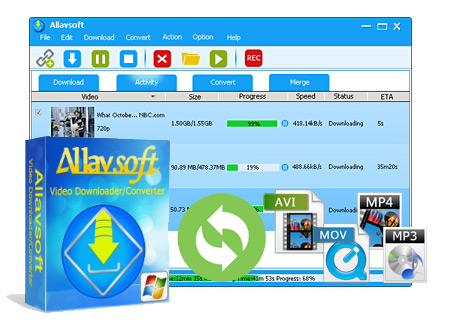Mpeg 2 License Key Keygen Mac
Contents. Format VC-1 is an evolution of the conventional -based video codec design also found in, and. It is widely characterized as an alternative to the and video codec standard known as. VC-1 contains coding tools for video sequences as well as encoding.
The main goal of VC-1 Advanced Profile development and standardization was to support the compression of interlaced content without first converting it to progressive, making it more attractive to broadcast and video industry professionals. Both and have adopted VC-1 as a video standard, meaning their video playback devices will be capable of decoding and playing video-content compressed using VC-1. Partially supports HD DVD playback by including the VC-1 decoder and some related components needed for playback of VC-1 encoded HD DVD movies. Microsoft has designated VC-1 as the 's official video format, and game developers may use VC-1 for included with games. By means of an October 31, 2006 update, all formats of Windows Media Video could be played on the Xbox 360 from a disc, USB storage device, or streaming from a PC via Windows Media Connect/Windows Media Player 11.
VC-1 is supported in the console and the project includes a VC-1 decoder. On August 24, 2012, the Foundation announced hardware decoding support for VC-1. Microsoft codec implementations The VC-1 codec specification has so far been implemented by Microsoft in the form of 3 codecs, each identified with a unique.
Keygen Serial License
WMV3 Simple and Main Profiles of VC-1 remained completely faithful to the existing WMV3 implementation, making WMV3 bitstreams fully VC-1 compliant. The WMV3 codec was designed to primarily support progressive encoding for computer displays. An interlaced encoding mode was implemented, but quickly became deprecated when Microsoft started implementing WMV Advanced Profile. Whereas WMV3 progressive encoding was implemented in the color space, the deprecated interlaced mode was implemented in the less common color space. The 9 (WMV3) codec implements the Simple and Main modes of the VC-1 codec standard, providing high-quality video for streaming and downloading. 'It provides support for a wide range of bit rates, from high-definition content at one-half to one-third the bit rate of MPEG-2, to low-bit-rate Internet video delivered over a dial-up modem. This codec also supports professional-quality downloadable video with two-pass and variable bit rate (VBR) encoding.'
Mpeg-2 codec key generator software links. Where can you get Mpeg-2 codec serial number generator for MAC [full version] Bs.player™ is used by more than 70 million.
A number of high definition movies and videos have been released commercially in a format dubbed. These titles are encoded with WMV3 Main Profile @ High Level (MP@HL).
WMVA WMVA was the original implementation of WMV Advanced Profile prior to the acceptance of the VC-1 draft by SMPTE. The codec was distributed with 10 and Windows Media Format SDK 9.5 install packages. There are slight bitstream differences between WMVA and WVC1, so consequently WMVA is handled by a different decoder than WVC1.
Some 3rd party hardware and software decoders only decode WMVA based content. As of 2006, WMVA is considered a deprecated codec because it is not fully VC-1 compliant. WVC1 WVC1, also known as Windows Media Video 9 Advanced Profile, implements a more recent and fully compliant Advanced Profile of the VC-1 codec standard. It offers support for interlaced content and is transport independent. With the previous version of the Windows Media Video 9 Series codec, users could deliver progressive content at data rates as low as one-third that of the MPEG-2 codec and still get equivalent or comparable quality to MPEG-2.
The Windows Media Video 9 Advanced Profile codec also offers this same improvement in encoding efficiency with interlaced contents. A decoder for WVC1 is included in, which is bundled with Windows Vista and is available as a download for Windows XP. This implementation is supported in. Windows Media.
Retrieved October 5, 2006. Summer of Code. Archived from on 2007-09-13. Retrieved 2007-03-21.
Raspberry Pi Foundation. Retrieved August 24, 2012. Sullivan, Gary J. (August 2010) December 2007. Microsoft Developer Network (MSDN) Library, Windows Development Kit, Windows Driver Kit, Device and Driver Technologies, Display Devices (Adapters and Monitors), Design Guide, Windows 2000 Display Driver Model Design Guide. Retrieved 29 October 2010.
Core Keygen Mac
Microsoft Developer Network. Retrieved 28 April 2014. Retrieved September 24, 2010. March 9, 2007. Retrieved 29 October 2010. Nine months without news but with heavy development.

A few select highlights are decoders for VC-1/WMV3/WMV9, VMware, VP5, VP6 video and WavPack, IMC, DCA audio and a WMA encoder. Raspberry Pi. Retrieved 2015-11-29. Retrieved 2013-05-19. Archived from (PDF) on November 13, 2006. Retrieved August 17, 2006. External links.
Retrieved December 12, 2005. Retrieved February 28, 2006. at the MultimediaWiki. – IETF RTP Payload Format for Video Codec 1. Retrieved August 24, 2012.

For the Raspberry Pi.





